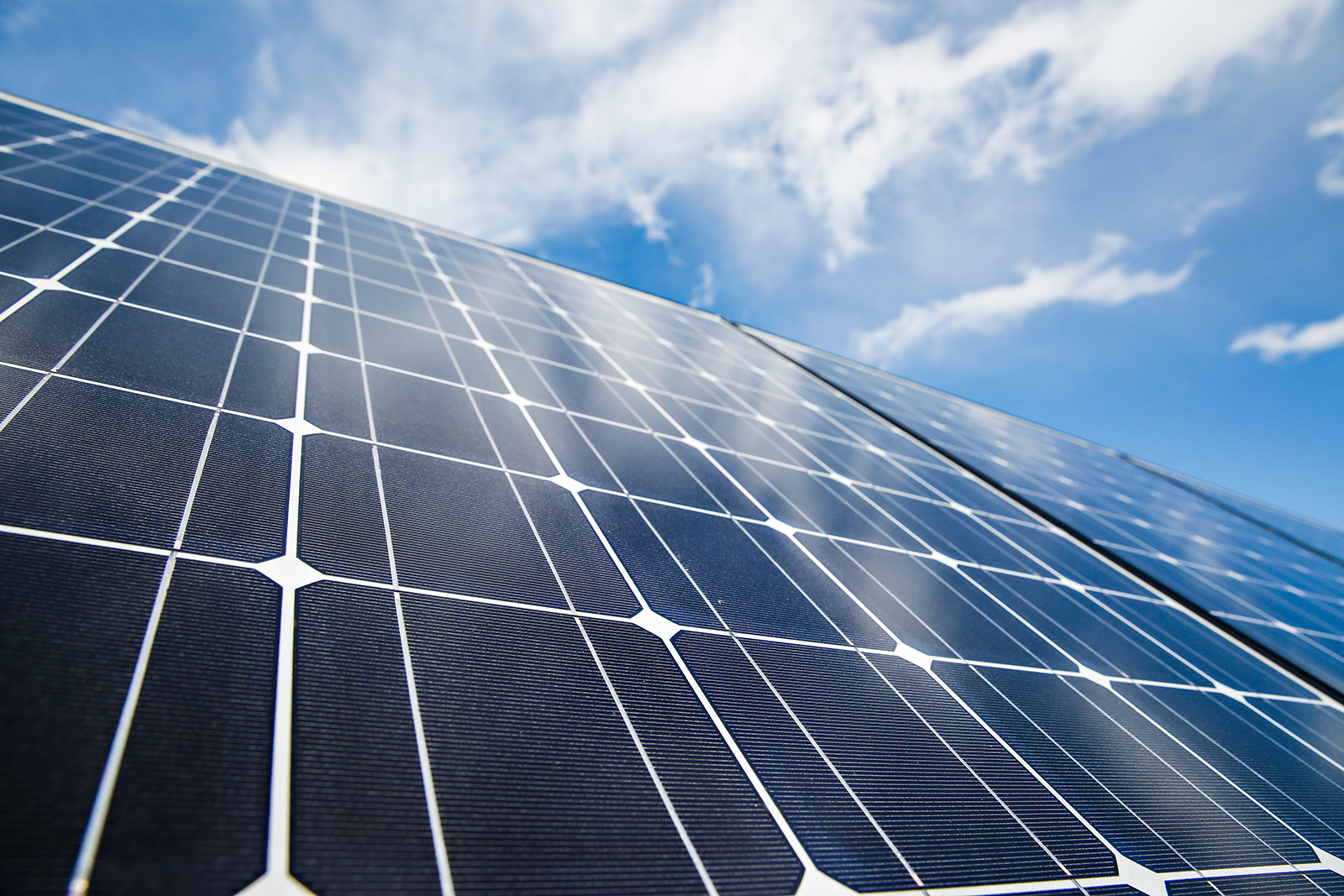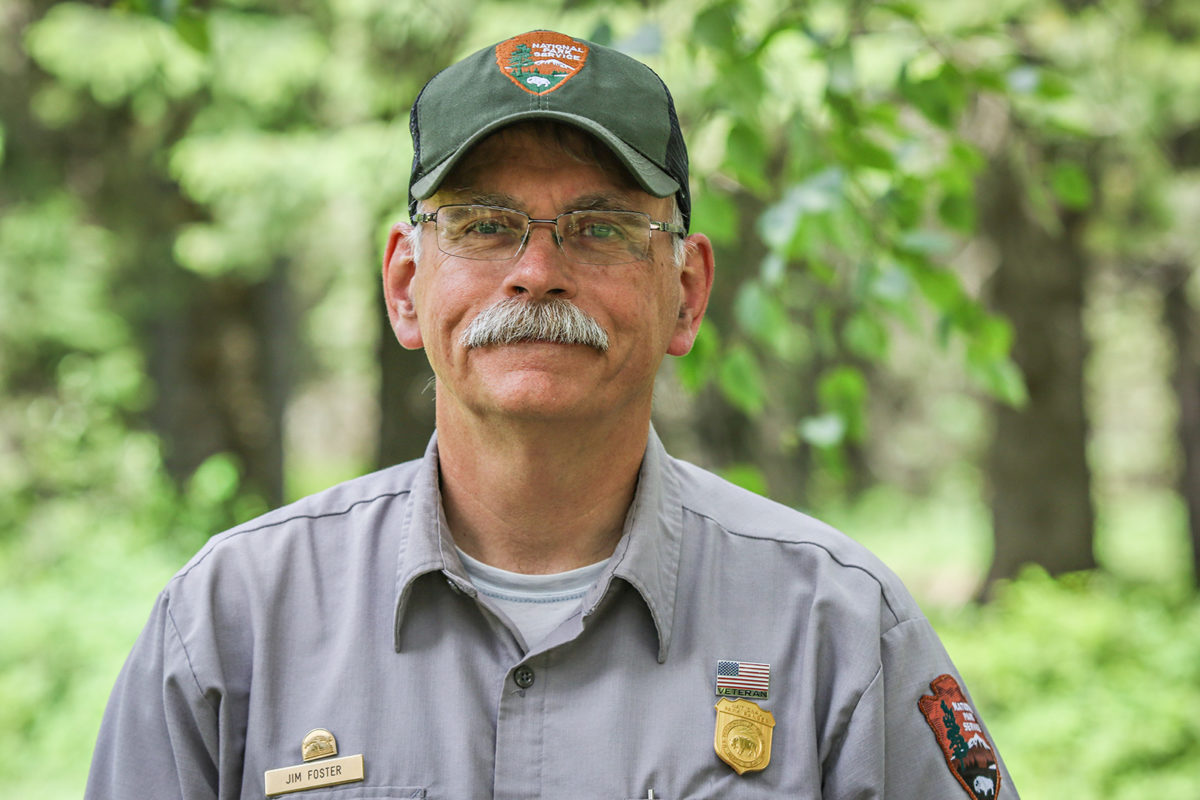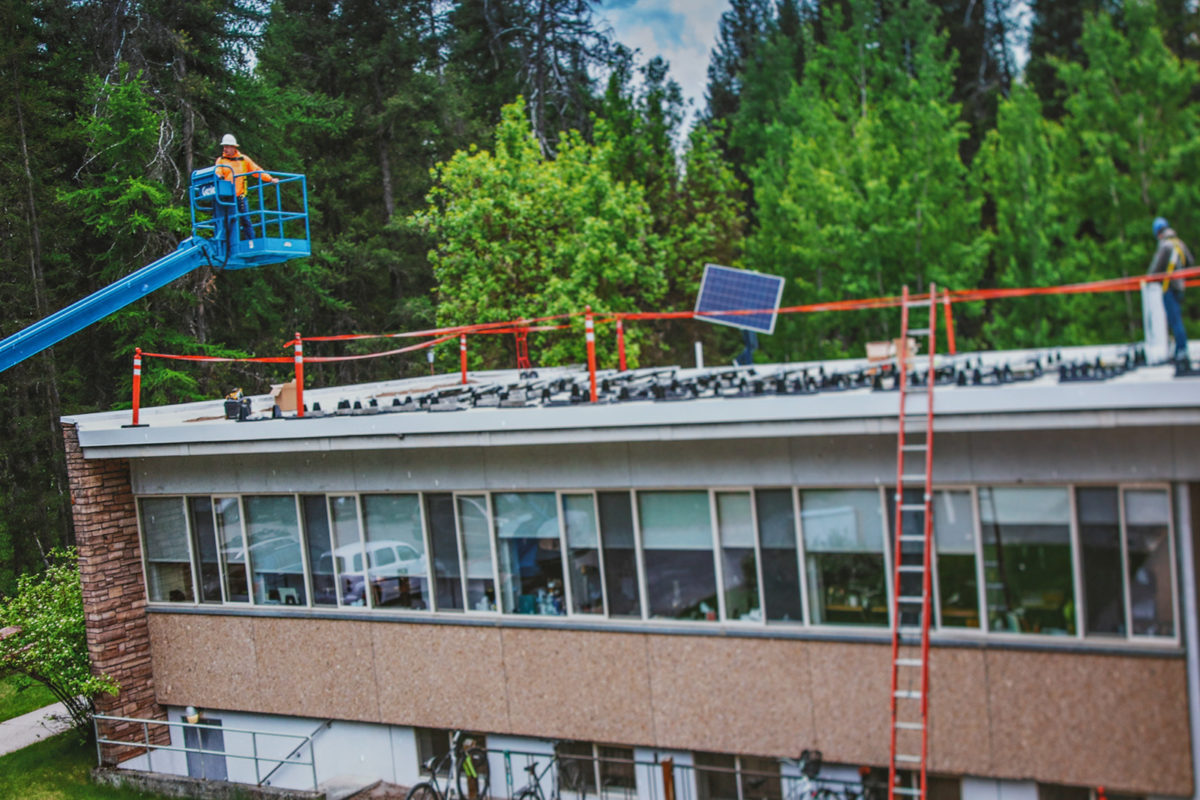
Glacier Park Highlights Solar Project
Solar array saves more than $2,000 in electricity costs each year
Tucked out of sight along the roof of the already out-of-sight Glacier National Park (GNP) headquarters in West Glacier are 108 solar panels, the latest photovoltaic array helping the park pare back its carbon footprint.
The solar panels, which generate 34.56 kilowatts during peak sunny days, were installed on the park headquarters last year and have offset roughly 39,000 pounds of CO2 by utilizing power from the sun — the equivalent of planting 290 trees or removing 880 cars from Going-to-the-Sun Road.
“From the very minute that system was completed and energized it started producing clean energy,” said Richard Marino, board chair of the nonprofit Everybody Solar, which partnered with GNP and the Glacier National Park Conservancy to bring the project to the park. “It helps reduced greenhouse gas emissions and Glacier National Park doesn’t have to pay for that electricity from the grid. That’s a direct benefit to the national park’s budget.”
The cost savings from the headquarters solar project is only around $2,000 per year, but those projects begin to add up, according to the park’s chief of facilities, Jim Foster.
“If we can put a little bit more money back into our operations fund, it gives us the ability to hire a portion of a seasonal salary for the year,” Foster said. “The more systems like this we can put up, the more savings we can accumulate back.”
The headquarters project is the third major solar project in the park. The Apgar visitor center has a rooftop array that covers a large portion of the energy needs in Apgar. The second project, completed around 2018, is a pedestal mounted array up in Polebridge that fully powers park operations in the North Fork.

“I was so thrilled when we got that operating,” Foster said. “For years we’ve been trying to figure out where else we can put photovoltaics in the park and looking for the next big project.”
Foster said the biggest barrier to transitioning more sections of the park to solar power is that many of the buildings where it makes sense to mount panels on the roof are governed by the National Historic Preservation Act, which limits any alterations that may have a visual impact for visitors.
“If a visitor drives up to the park headquarters, they’re not allowed to see the solar panels,” Foster said. “I built mockups of the panels and walked way into the woods from all sides taking photographs to make sure that you couldn’t see a tip of any of them.”
That’s a barrier Foster faces with one of the next solar projects he has in mind for the park’s community building. With no way to mount rooftop panels without them being visible, he must think about a pedestal mounted array which is much more costly.
“It’s kind of ironic. You’d think everybody would want to dance and celebrate over the fact that we’re putting photovoltaics everywhere we can, but because of the way the National Historic Act was done, we’re actually surprisingly limited,” Foster said.
Everybody Solar has a previous history with Glacier, having worked to energize the Grizzly Point comfort station, and Marino said he expects the partnerships to continue.
“We want to do more work in this park, and we’d like to have similar projects in every national park,” Marino said. “We know the more eyes on projects like this, the more excited people get to donate to future projects, and they get motivated to do something about climate change.”
